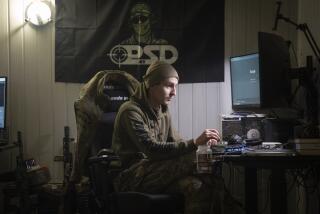Ceausescu’s Brothers Sold Soviet Military Data to U.S.
- Share via
For 10 years before deposed Romanian dictator Nicolae Ceausescu’s execution, the U.S. government secretly bought advanced Soviet military technology from Romania through Ceausescu’s two brothers, who served in high government positions.
As part of the clandestine intelligence program coordinated by the CIA, the U.S. government paid more than $40 million to Romania through foreign middlemen, with about 20% ending up in Swiss bank accounts controlled by the Ceausescu family, according to intelligence sources.
The Ceausescu connection was part of a broader U.S. weapons-buying operation that reached into the highest levels of the East Bloc military Establishment. The CIA and the U.S. military were able to obtain important components of the tactical, non-nuclear weaponry--including air defense systems--that the Soviet Union has in place to protect itself and other Warsaw Pact countries.
From Romania alone acquisitions included the latest version of the Shilka, one of the most effective anti-aircraft systems in the Soviet inventory; mobile rocket launchers that were improved by the Romanian military, and radar systems used in identifying targets and directing the firing of various Soviet anti-aircraft weapons.
Armed with this knowledge, U.S. military planners could then develop effective countermeasures or perhaps not build a costly weapon.
“The potential value of these things is almost incalculable,” a U.S. intelligence officer said. “The only way you can truly unlock the secrets of your adversaries’ weapons is to physically have them.”
For example, access to the Soviet radar systems reportedly aided in U.S. development of the revolutionary Stealth technology, designed to allow aircraft to elude radar detection.
U.S. government officials say that Nicolae Ceausescu was not personally involved in the dozen or so transactions but that the operation could have succeeded only with his tacit approval.
“It was an assumption from the beginning,” said one U.S. intelligence officer. “It was never something that we had to debate. None of this could happen, our presumption was, without him.”
The Romanian operation came to a halt with Ceausescu’s overthrow and execution last December. The two brothers also are out of the picture: Marin Ceausescu, 71, was found hanged Dec. 28 in the basement of the Romanian trade mission in Vienna, which he headed. Lt. Gen. Ilie Ceausescu, 63, deputy defense minister and secretary of the Supreme Political Council of the Romanian Armed Forces, was arrested and remains in custody.
The pro-democracy upheaval in Eastern Europe has disrupted the broader operation, but not ended it. Over the past decade, the U.S. government has paid more than $250 million to obtain the latest versions of Soviet-made weapons systems through contacts in Poland, Czechoslovakia, Hungary, East Germany and Bulgaria, according to those interviewed.
The contacts included influential military or Communist Party officials, whose willingness to sell was seen by some in the U.S. intelligence community as a reflection of growing discontent among some Warsaw Pact officials.
“It was corrupt to the core,” a former U.S. official said. “There was no ideological discrimination. If you wanted to use this as an indication of the fragility of the system, this was a classic.”
More to Read
Sign up for Essential California
The most important California stories and recommendations in your inbox every morning.
You may occasionally receive promotional content from the Los Angeles Times.












